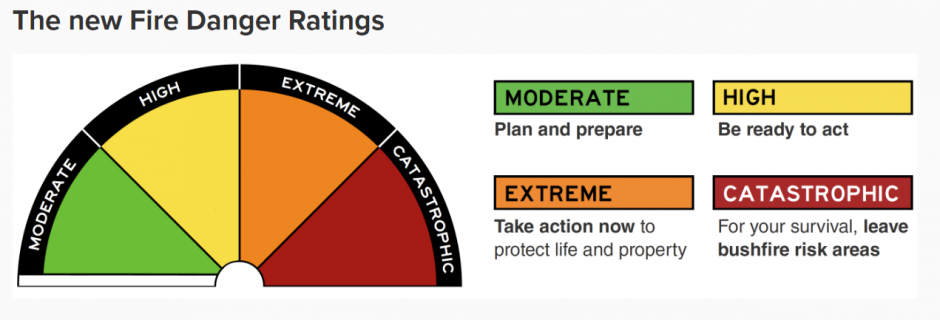By Renee Wood
On Thursday 1 September a nationally significant event will be taking place as the country switches to the revised Fire Danger Rating System.
The rating system will be dropping from six in Victoria to four ratings, which will be the same right across Australia, in order to better provide consistent messaging for all.
CFA Chief Officer Jason Heffernan said it’s something that was first discussed among states and territories in 2014.
“For the first time ever someone can travel from Queensland, through to South Australia via New South Wales and Victoria and understand and get the same consistent message to what the fire dangers are for their local communities and be able to understand what that means for them and take the most appropriate action at the time,” Mr Heffernan.
The simplified and unified rating system was a recommendation from the 2020 bushfire and natural hazards Royal Commission and it was created by looking at all fuel type topographies right across the continent.
“It builds on 60 years’ worth of fire research to build a fire danger rating that gives a fire behaviour index…
“But more importantly, it provides to the community a rating that tells them what they should be doing in the event of a fire or in the lead up to spire and dangerous conditions.”
The CFA are now in the process of decommissioning the old signs, with 400 across Victoria.
“New signs will be installed for those communities to coincide with the fire danger period that we would traditionally see here in Victoria starting in the northwest and making our way through to the eastern portion through to Gippsland,” Mr Heffernan.
The ratings are as follows:
Moderate – green – plan to prepare.
Time to download the Bushfire Survival Plan or Vicemergency App and create and remind yourself of your own bushfire plan.
High – yellow – be ready to act
Fires that occur during the high fire behaviour index are likely to pose some concern and threat to your life and your property. Bushfire Survival Plan should have been prepared by now and you should be in a position to be ready to enact that plan and save yourself and your property.
Extreme – orange – take action now to protect life and property
Fires that occur on an extreme fire danger day are very dangerous and will very quickly grow and pose a risk to you and your family. You must keep up to date with weather conditions and fire through the emergency app or listening to your emergency broadcaster. Leaving early is your safest option.
Catastrophic – red – for your survival, leave bushfire risk areas
Catastrophic is now the most dangerous fire behaviour index across the country.
Fires that occur during a catastrophic rating will grow to size very very quickly and they are the most dangerous, most deadly fires you will see in the landscape. You must be ready to protect yourself and your property immediately and take an action and the advice given to you by emergency services. Victorians are warned not to be in bushland areas during a day of catastrophic fire danger.
Star Mail spoke with Hillcrest CFA firefighter Fiona Burns when the ratings were first announced and Ms Burns said the new system would help local CFAs to communicate effectively with residents and visitors alike.
“Having a consistent message across the country, no matter what state you will be in will enable people who are visiting us, or who are visiting all the states, to understand what the new Fire Danger Rating System will mean for them in the same way in every state,” she said.
“The four levels in the new system will also enable a much easier way for residents to integrate their fire plan based on what each level will mean for them. It’s very important that everyone has a bushfire plan, and that it is relative to the risk on any given day before the start of the fire season.”
Ms Burns said previously that different terminology in different states caused some confusion and our understanding of fire was far greater.
“In Victoria, we’ve previously used Code Red which will now be Catastrophic and be the same regardless of the state,” she said.
“We have a better understanding of the science behind fires, and an understanding of the different types of vegetation is really important for our fire agencies, but also for residents and members of the community to be able to understand what risk it is that they are facing when they live in certain areas.”







